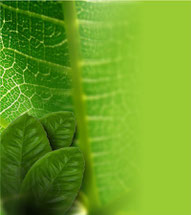Herbs - Medicinal Plants
Parsley health benefits
Health benefits attributed to Parsley

Fruits, leaves:
It has a diuretic action due to flavonoids, essential oil and potassium salts.
The apiol is appetizer, digestive, antispasmodic, emmenagogue, vasoprotective and vasodilatory, all of which is enhanced by the presence of the myristicin.
It has tonic, remineralizing and anti-anemic properties due to its content of vitamins and minerals.
Roots:
The roots diuretic action is softer than the fruits action.
It is indicated in cases of anemia, convalescence, poor appetite, hyposecretion dyspepsia, flatulence.
When is required an increase in urine output: urinary disorders (cystitis, ureteritis, urethritis, oliguria, urolithiasis).
Is a palliative in cases of gout, hypertension, edema, and obesity accompanied with fluid retention.
Amenorrhea, dysmenorrhea.
The chewed leaves are used to fight halitosis.
The phototoxicity of furocoumarins, may be applicable for hypopigmentation dermatological diseases such as vitiligo.
Uses of parsley
Warnings use. Parsley contraindications.
In general, side effects are not observed
when the plant is used in recommended doses.
It is contraindicated in patients allergic to apiol, who have kidney
inflammations or are pregnant. Therapy in cases of edema can
reduce cardiac and renal function.
Overdosing can be dangerous including symptoms of high contractility
of smooth muscle, specially the bladder, bowel and uterus. Other symptoms of
toxicity include anuria, digestive tract bleeding, hemolysis of fatty
liver, metaglobinuria and bleeding of the mucous membranes.
Preparation and Dosage
Fruits:
- Infusion: a teaspoon (leaves), a teaspoon (fruits), boil for 10 minutes. Three cups a day before meals. Fluid intake is important during the treatment.
Roots:
- Decoction: one teaspoon per cup. Boil for 5 minutes, infuse for 15 minutes. Three cups a day, before meals.
Leaves:
- Infusion of parsley leaves: a teaspoon (leaves), a teaspoon (fruits), infuse for 10 minutes. Three cups a day, before meals. The fresh plant juice: 10 to 15 drops, from one to
three times daily.
- Topically:
Crushed fresh leaves
<< see also Parsley properties
and content...
References
- Ashraf M et al., (1980) Pak J Sci Ind Res 23(3/4): 128.
- Bjeldanes LF, Kim I, (1977) J Org Chem 42:2333.
- Busse WW et al., (1984) J All Clin. Immunol. 73:801.
- Chaudhary SK et al., (1986) Planta Med (6):462.
- Gijbels MJM et al., (1985) Fitoterapia 61(1): 17.
- Innocenti G et al., (1976) Planta Med 29:165.
- Neuhaus-Carlisle K et al., Calcium-antagonistic activity of extracts and constituents of Petroselinum crispum and other pheaylpropane derivatives. In: PM 59(7):A582. 1992.
- Zheng GQ, Kenney PM, Lam LKT, Myristicin - a potential cancer chemopreventive agent from parsley leaf oil. In: J Agric Food Chem 40(1): 107. 1992.
- Neuhaus-Carlisle K et al.. Calcium-antagonistic activity of extracts and constituents of Petroselinum crispum and other phenylpropane derivatives. In: PM 59(7):A582. 1992.

 Pharmacognosy´s topics - Medicinal plants
Pharmacognosy´s topics - Medicinal plants




















Write a comment